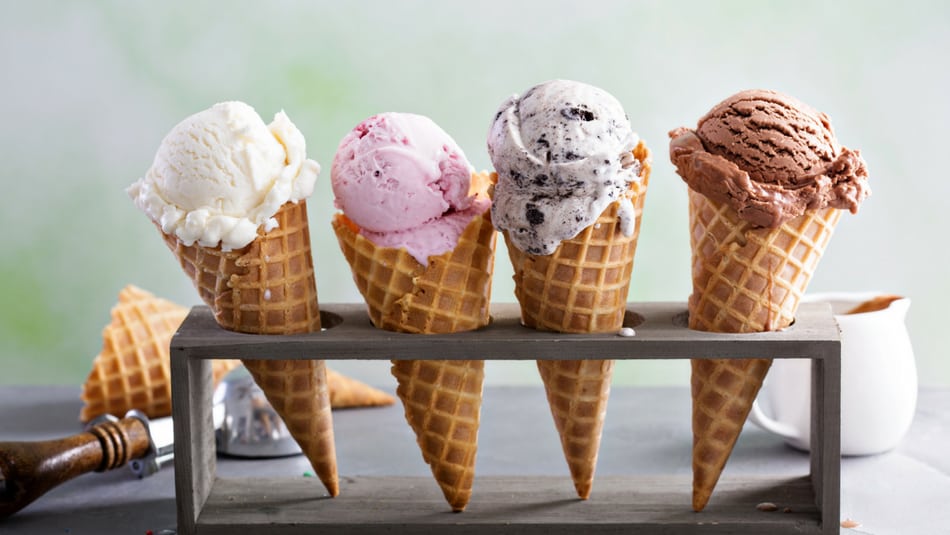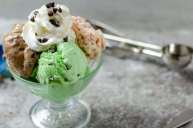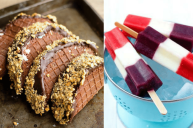As the hot temperatures rise, so does the need for indulging in a frozen treat like ice cream, gelato, or sorbet. Although, in my opinion, digging into any type of cream is not just for those hot months where you need a nice cool-down treat. It's a year-round type of food. Actually, ice cream is a necessity in life.
Videos by Wide Open Country
Going to the grocery store or ice cream shop can be confusing with all the different flavors and types of ice cream since there's such a variety. Do you prefer something creamy? If so, then you should probably go for soft serve ice cream or frozen yogurt. What about something on the fruitier side? Why not order a few scoops of sorbet or sherbet.
Good thing there's a world of delicious frozen treats out there and knowing the differences can really help you find your favorite. Check out the key differences between your favorite frozen treats below.
Ice Cream
We're all familiar with ice cream. Creamy, sweet, and with hundreds and hundreds of flavors to choose from, no wonder it's one of America's favorite treats. Don't ask me how many cartons of ice cream I have in my freezer right now!
Ice cream is made from cream, milk, different flavorings, and sometimes eggs. Ice cream also has to consist of 10 percent fat-one of the reasons why it's so rich and luxurious.
Ice cream is commonly found in two different types: hard ice cream and soft serve ice cream. Hard ice cream is usually higher in fat and stored at a colder temperature. You also have to pack it in using an ice cream scoop.
Soft serve on the other hand is of course, soft and is made in a special soft serve machine, which incorporates more air to gives it a smooth, fluffy texture. Soft serve contains less fat and is stored at a slightly warmer temperature.
Don't forget to check out some of our favorite ice cream recipes to try at home.
Gelato
Say hello to ice creams long-lost Italian cousin. Gelato, which is the Italian word for "ice cream" is actually quite different than standard, American ice cream. It contains less milk fat and is churned very slowly, which can give it a denser texture.
Italian gelato comes in a ton of fancy flavors like stracciatella, hazelnut, and pistachio and is served at a warmer temperature than ice cream making it feel a bit softer. You can find gelato all around the United States, but there's nothing like treating yourself to authentic gelato in Italy.
Frozen Custard
I like to think of frozen custard as a mix of ice cream and soft serve. It's super creamy and thick due to the addition of egg yolks found in the custard base. Frozen custard is commonly found in the Midwest and South.
Frozen Yogurt
Frozen yogurt or fro-yo has become increasingly popular everywhere. There are a ton of fro-yo shops where you can load up on different flavors of frozen yogurt as well as some interesting toppings.
Instead of using milk and cream for the base, yogurt is one of the main ingredients, giving it its tangy flavor along with probiotics that help with digestion. That's a good excuse to eat frozen yogurt every day, right?
Sorbet
If you want a break from all that dairy or you're lactose intolerant, go for sorbet. Made with fruit juice, fruit purée, sugar or simple syrup, and water, it still has plenty of time in the ice cream maker to give it a creamy consistency.
This non-dairy frozen treat is refreshing and commonly served as a palate cleanser between meals.
Sherbet/Sherbert
https://www.instagram.com/p/BlS3_G_ncYn/?tagged=rainbowsherbert
As a kid, sherbet was one of my favorite desserts. I mean, what kid could pass up all of those swirls of color?
Sherbet might get mistaken for sorbet, however, there is a pretty big difference. Sherbet, unlike sorbet, contains milk or cream. It's always fruit-based and is on the sweeter side, but just as creamy. There's no doubt sherbet will make you feel like a kid again.
Granita
One of the easiest frozen treats to make at home is granita. It's made with fruit purée, water, sugar, and you can even spike some recipes with booze. Granita is a little different than ice cream because it doesn't go through a churning process.
The finished granita mixture is poured into a baking dish, placed in the freezer, and scraped with a fork to create chunky pieces of ice crystals for texture.




